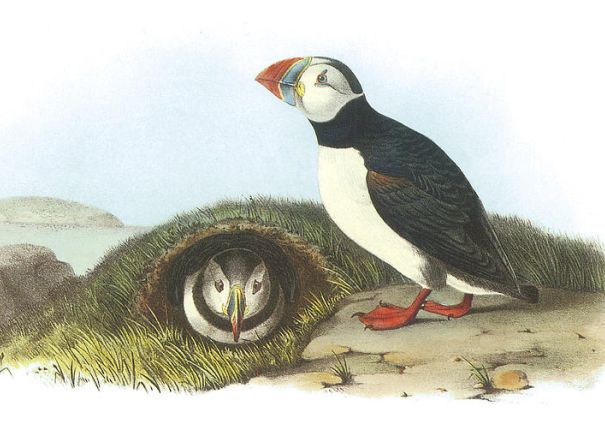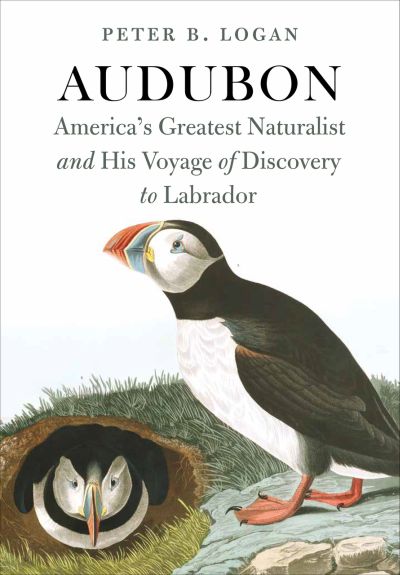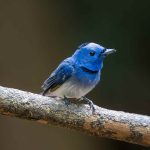
If you take only one thing away from this review, let it be this: Do not be intimidated by this book!
Yes, even the title is bulky. Yes, it’s physically massive, exhaustively researched, rich with appendices and notes and maps and illustrations, and in every way the sort of thing that you look at and think “Wow, this author really, really cares about John James Audubon. Like, a lot. Even by John James Audubon aficionado standards” but not at all the sort of thing you look at and think, “I should take this to the beach.”
And it’s true, you shouldn’t take this to the beach, but only because your arms will get tired and you might end up getting so absorbed that you forget to reapply your sunscreen. You see, author Peter B. Logan is not only an Audubon historian of great tenacity, he is also a writer of no small skill. While his mission — to carefully reconstruct a journey that occurred at a critical professional, personal, and philosophical juncture in Audubon’s career — involves the kind of painstaking attention to detail that one associates with the most specialized of academic topics, Logan also manages to produce a book that is extremely readable for a non-scholarly audience.
It’s true that Logan is helped rather than hindered by his subject matter. Audubon was a man of many adventures and many personal peccadilloes. Logan is good at emphasizing the charms that brought the painter entry into many strata of society, but he refrains from whitewashing his subject’s flaws and especially the toll his career took on his devoted wife Lucy. And the Labrador trip of 1833, as Logan points out in his preface, was not only an adventure into wild, physically challenging territory where few individuals of Audubon’s culture had previously tread. It was also in some ways an emotional quest for Audubon, who was freshly driven to complete his great work in the face of his first intimations, not only of his own mortality, but also of the idea that his beloved adopted continent was not inexhaustible and that its natural riches could be destroyed by constant exploitation. Given that on this expedition Audubon recorded observations of what just may have been the only Labrador Duck nest described to Western science, along with his encounters with Passenger Pigeon and Eskimo Curlew (although not, sadly, with the Great Auk, then only eleven years from its date with destiny), the account is of natural interest to anyone with a mind for avian conservation. Birders will also enjoy such moments as Audubon’s first encounter with the Lincoln’s Sparrow and his observations of the mysterious Washington’s Eagle.
Even with all this to draw on, the book still could have been a slog with its minute daily accounts of islands visited, blackflies endured, and Fox Sparrows shot were it not for Logan’s native talents. I especially enjoyed the author’s skill at knowing when, where, and how to throw in various asides about history and ornithology, using them to enhance rather than interrupt the flow of the main narrative. He also produces as useful multi-chapter summary biography of Audubon’s life before and after the expedition, handy for those of us not as deeply immersed in his subject as himself. He has a sense of humor, understated but definitely present when he deals with topics like Audubon’s shifting relationship with the ship’s brandy supply. Most critically, in my mind, he makes clear and grapples with the larger issues at play — Audubon’s fraught role as a symbol of conservation, his shifting scientific reputation over time, and the social issues that shaped his life and career — in a subtle and organic way through the course of the story.
So yes, this summer, give this book a shot. Maybe it’s not soon to be a major motion picture, but the 10,000 Birds audience will enjoy it anyway.














Leave a Comment